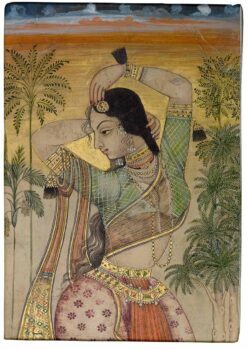Across India, discussions about demographics are charged with questions of destiny and identity. In the Hindi belt, particularly in UP and Bihar, the focus often turns to birth rates between Hindus and Muslims, a dynamic sometimes referred to as a “cradle race.” This term reflects deeper concerns about societal balance, yet paradoxically, it also influences high birth rates among upper castes. I know a (Hindu) woman from Bihar who recently had her third son, a personal example of how this dialectic pervades everyday life.

Globally, the Hindu population has grown modestly from 11% to 15% over the past five centuries. In contrast, the share of the Abrahamic faiths has surged from 37% to 54%, moving from a plurality to a Scottish majority.
In the same period, within what is the modern boundaries of India, the Hindu population has seen a subtle decline—from 85% to 79%—reflecting a complex history of migration, cultural shifts, and geopolitical changes. The most pronounced demographic shifts occurred in areas now known as Pakistan and Bangladesh, which made the Hindu population of the Greater Indian Subcontinent dropped from 78% to 66%. Despite this decline, these two countries still rank as the 2nd and 5th largest Hindu populations globally, underscoring their profound & immovable Indic substrate.

Mughal imperialism significantly reshaped Bengal’s religious landscape with taxation settlements, British colonialism introduced Christianity with further irrigation works also impacting demographics in Western Punjab, and Partition irrevocably redrawing demographic lines.
The narrative of global demographic displacement—often framed as the decline of a lighter-skinned, prosperous population in a democracy—oversimplifies and distorts the real dynamics. The Parsis of Mumbai, for example, despite their dwindling numbers, continue to wield significant economic and cultural influence. Their enduring presence in South Bombay, marked by landmarks and institutions, underscores a critical point: demographic numbers don’t necessarily dictate power or presence.
Historically, the emergence of elites often resulted from historical accidents rather than pure meritocracy. The upper castes in India, consistently representing 15-25% of the Hindu population over centuries, exemplify this. Their enduring influence, despite societal changes and efforts toward social equity, highlights the deep-rooted structures that shape contemporary realities.

In France, the overrepresentation of white individuals in parliament—estimated at 90-95% despite whites comprising 70-85% of the population (but these numbers are notoriously hard to get by as France doesn’t do official racial & ethnic counts so as to not undermine the indivisibility of the French people & nation)—reflects a global issue: power doesn’t always proportionally reflect demographic makeup. This discrepancy invites a broader reflection on how historical advantages and institutional control determine who holds power.

This discussion is crucial, not just academically, but for understanding how identity, power, and demographics intersect in complex ways. By critically examining these narratives, we can better understand the realities of demographic changes without succumbing to deterministic thinking.
The myth of democratic liberal capitalism is the presumption that voters determine the true shift of power. The growing inertia of the deep state—civil services and military administrations—makes genuine reform difficult, echoing George Orwell’s observation: “but England will still be England, an everlasting animal stretching into the future and the past, and, like all living things, having the power to change out of recognition and yet remain the same.”

It’s nigh on impossible to imagine India that is not Bharat, to envision a future where Hinduism isn’t deeply & inextricably intertwined with its land of origin. It is much more likely that one day, Vedic traditions will once again flow across the banks of the Indus, reclaiming the lost civilization of the past.


rise of modi and his rule is an important landmark in the rise of modern hinduism and will be more recognised after decade or two. the churn in the hindu society is enormous, and it details and practises of hinduism is getting more concentrated in this generation.